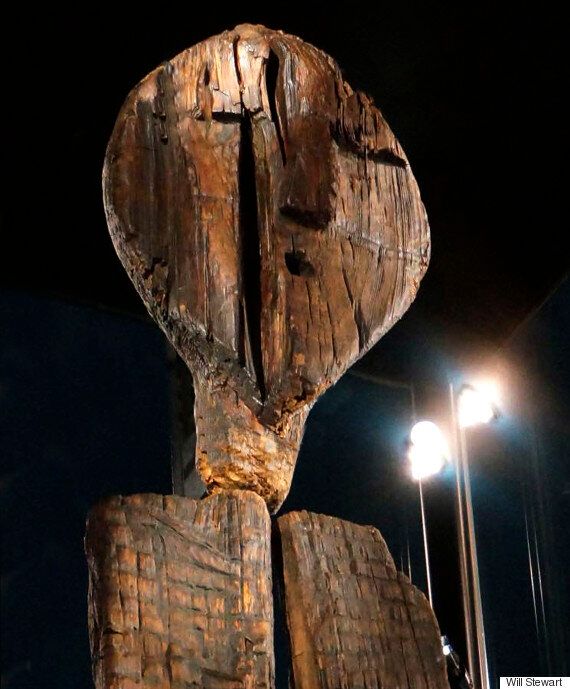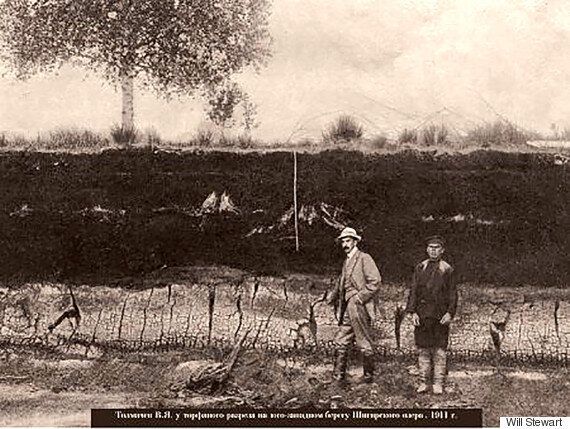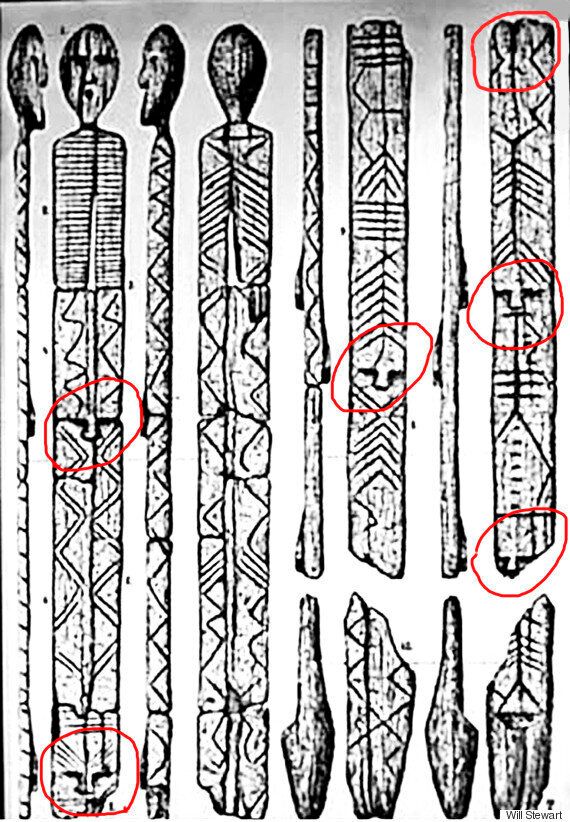New tests on a mysterious wooden idol found in a Russian peat bog have revealed “sensational” results.
German scientists say the idol – known as Big Shigir – is actually 11,000-years-old – making it 1,500-years older than previously believed.
But the etchings which cover the statue – believed to be a coded message from ancient man – are no closer to being deciphered.

Scientists have revealed Big Shigir is 11,000 years old
By comparison, Stonehenge dates back 4,614 years, while the haunting Russian sculpture is also more than twice as old as the Egyptian pyramids.
"We can say the results are sensational," a source at Sverdlovsk Regional History Museum told The Siberian Times.
SEE ALSO:
The museum said the dating - using the world's most sophisticated technology - was undertaken to remove doubts about the age of the Idol, which was originally dug out of a peat bog in the Ural Mountains in 1890.

The idol was dug out of a peat bog in the Ural Mountains in 1890
A source told the newspaper: "The first attempt to date the idol was made 107 years after its discovery, in 1997. The first radiocarbon analyses showed that idol was 9,500 calendar years old, which led to disputes in scientific society.
"To exclude doubts, and to make the results known and accepted, a decision was made to use the most modern technologies to date the Idol again.
"Researches were conducted in Mannheim, Germany, at one of the world's most advanced laboratories using Accelerated Mass Spectrometry, on seven minuscule wooden samples.
"The results were astonishing, as samples from inside parts of the Idol showed its age as 11,000 calendar years, to the very beginning of the Holocene epoch.

The idol has several faces - one of which is three-dimensional
"We also learned that the sculpture was made from a larch which was at least 157 years old. Clear cuts on the tree trunk leave no doubts that the Idol was made from a freshly cut tree, by stone tools."
The source concluded: "The research proves that the Big Shigir Idol is the world's oldest wooden sculpture, and an outstanding discovery, a key to understanding Eurasian art."
The peat bog preserved the Idol "as if in a time capsule" on the western fringes of Siberia.
The ancient monument stands 2.8 metres in height but originally was 5.3 metres tall, as high as a two storey house.

Big Shigir originally stood at 5.3 metres tall - as high as a two-storey house
In the Soviet era, two metres of the ancient artifact went missing, though drawings were made of it by pre-revolutionary archaeologist Vladimir Tolmachev
Professor Mikhail Zhilin, leading researcher of the Russian Academy of Sciences' Institute of Archeology, has spoken previously of his "feeling of awe" when studying the Idol.
"This is a masterpiece, carrying gigantic emotional value and force," he said.
"It is a unique sculpture, there is nothing else in the world like this. It is very alive, and very complicated at the same time.
"The ornament is covered with nothing but encrypted information. People were passing on knowledge with the help of the Idol."
While the messages remain "an utter mystery to modern man", it was clear that its creators "lived in total harmony with the world, had advanced intellectual development, and a complicated spiritual world", he said.
The markings and hieroglyphics could have multiple meanings for the ancient statue-makers who gave the Idol seven faces, only one of which is three-dimensional, say academics.
"If these are images of spirits that inhabited the human world in ancient times, the vertical position of figures (one above the other) probably relate to their hierarchy," said author Petr Zolin, citing scientific work by Svetlana Savchenko, chief keeper of Shigir Idol, and Zhilin.
"Images on the front and back planes of the Idol, possibly indicate that they belong to different worlds.
"If there are depicted myths about the origin of humans and the world, the vertical arrangement of the images may reflect the sequence of events. Ornaments can be special signs which mark something as significant."
Professor Thomas Terberger, of the Department of Cultural Heritage of Lower Saxony, and Ewe Hoysner, from the Berlin Archaeological Institute, were the German scientists involved in researching the Idol's age.
